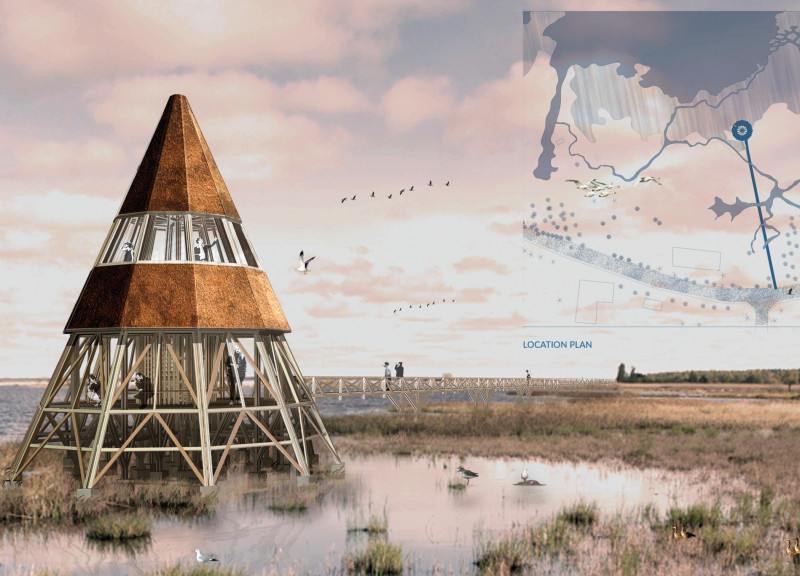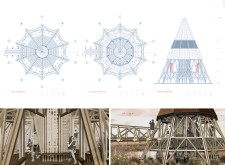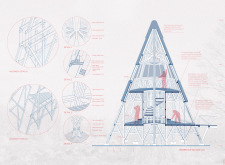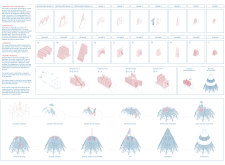5 key facts about this project
At the heart of this architectural endeavor is a commitment to sustainability and efficiency. The project embraces eco-friendly practices such as the use of renewable energy sources, water conservation methods, and materials that promote a reduced carbon footprint. This not only reflects a growing awareness of environmental responsibilities but also aligns with modern architectural philosophies that prioritize longevity and resilience in design.
The overall form of the building harmonizes with the natural contours of the site. The designers employed a smart blend of geometric shapes and organic lines, creating a facade that captures attention without overwhelming the landscape. Large windows punctuate the structure, promoting natural light and providing visual connections to the outdoors. This integration of natural elements elevates the experience of the space, encouraging occupants to engage with their environment while fostering a sense of wellbeing.
The material palette chosen for this project consists of concrete, glass, wood, steel, and brick, each selected for its functional attributes and aesthetic qualities. Concrete provides a strong structural framework, while glass enhances transparency and openness. Wood introduces warmth and texture, often used in key interior spaces to create a welcoming atmosphere. Steel components offer strength and support for expansive open areas without compromising safety. Brick, a traditional yet timeless material, adds character and can promote thermal efficiency, essential in creating comfortable indoor climates.
The layout of the project is another critical aspect that deserves attention. Thoughtfully designed spaces facilitate movement and interaction, with common areas encouraging socialization while also accommodating privacy for individual activities. The arrangement of interiors reflects a user-centered approach, thoughtfully considering how people will navigate and utilize the spaces.
Uniquely, the project incorporates landscaping elements that enhance the ecological footprint while providing natural beauty. Various softscape features, including native plantings and outdoor gathering spaces, create a cohesive outdoor experience. These elements not only improve visual appeal but also contribute to biodiversity and green habitat, reinforcing the project's commitment to sustainability.
One of the standout design approaches in this project is the blending of indoor and outdoor environments. Spaces flowing seamlessly into terraces or gardens invite nature into daily life, enhancing both the aesthetic and functional aspects of the design. This concept of merging environments encourages occupants to experience the shifting qualities of light and nature throughout the day.
Furthermore, the design includes considerations for local culture and community needs, making it relevant to the sociocultural context. By engaging local materials and craftsmanship, the project fosters a sense of place and identity that is crucial in contemporary architecture.
Encouraging exploration of this architectural design, readers are invited to delve into architectural plans, architectural sections, and architectural ideas to gain a comprehensive understanding of the project’s nuances and intent. Examining these elements will reveal the intricacies of the design and how each component contributes to the overall vision, offering a rich perspective on the thoughtful considerations that shape modern architecture. Exploring the project's presentation will provide deeper insights into the innovation and functionality embedded within this engaging architectural design.


























